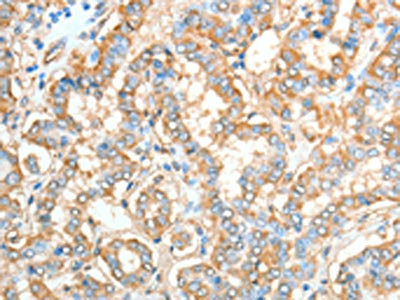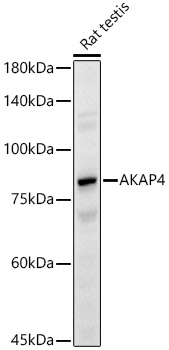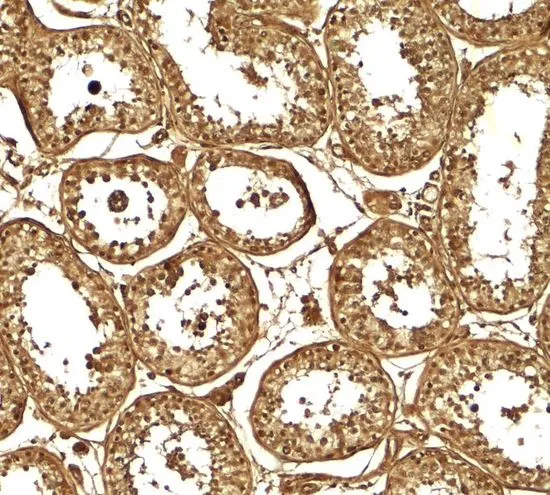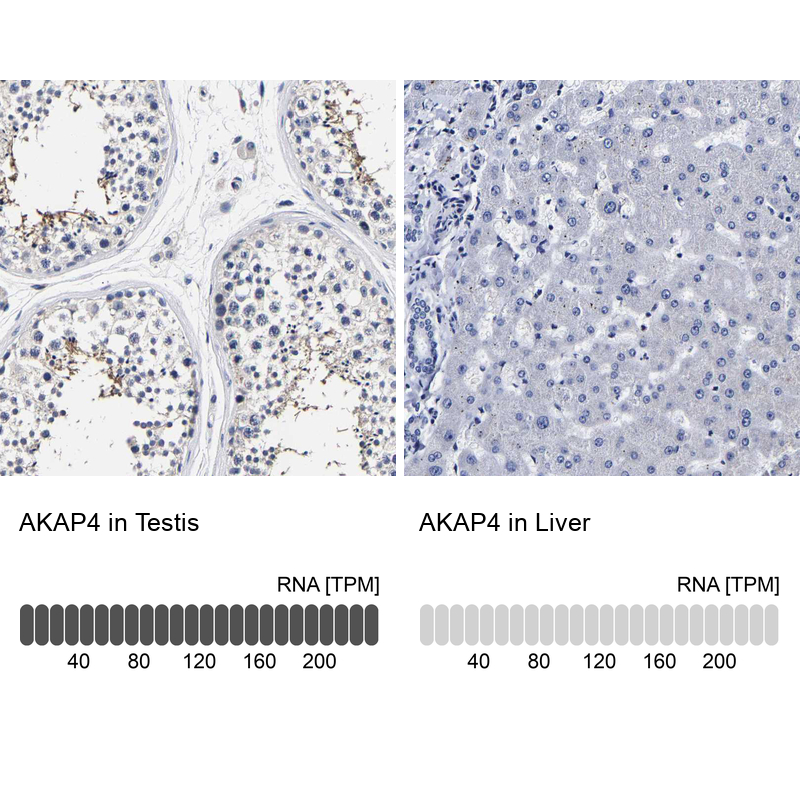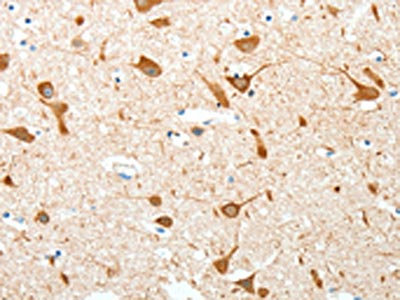
The image on the left is immunohistochemistry of paraffin-embedded Human brain tissue using CSB-PA311022(AKAP4 Antibody) at dilution 1/10, on the right is treated with fusion protein. (Original magnification: x200)
AKAP4 Antibody
CSB-PA311022
ApplicationsELISA, ImmunoHistoChemistry
Product group Antibodies
ReactivityHuman
TargetAKAP4
Overview
- SupplierCusabio
- Product NameAKAP4 Antibody
- Delivery Days Customer20
- ApplicationsELISA, ImmunoHistoChemistry
- CertificationResearch Use Only
- ClonalityPolyclonal
- ConjugateUnconjugated
- Gene ID8852
- Target nameAKAP4
- Target descriptionA-kinase anchoring protein 4
- Target synonymsAKAP 82, AKAP-4, AKAP82, CT99, FSC1, HI, PRKA4, hAKAP82, p82, A-kinase anchor protein 4, A kinase (PRKA) anchor protein 4, A-kinase anchor protein 82 kDa, cancer/testis antigen 99, epididymis secretory sperm binding protein, major sperm fibrous sheath protein, protein kinase A anchoring protein 4, testis-specific gene HI
- HostRabbit
- IsotypeIgG
- Protein IDQ5JQC9
- Protein NameA-kinase anchor protein 4
- Scientific DescriptionThe A-kinase anchor proteins (AKAPs) are a group of structurally diverse proteins, which have the common function of binding to the regulatory subunit of protein kinase A (PKA) and confining the holoenzyme to discrete locations within the cell. This gene encodes a member of the AKAP family. The encoded protein is localized to the sperm flagellum and may be involved in the regulation of sperm motility. Alternative splicing of this gene results in two transcript variants encoding different isoforms.
- ReactivityHuman
- Storage Instruction-20°C or -80°C
- UNSPSC41116161

